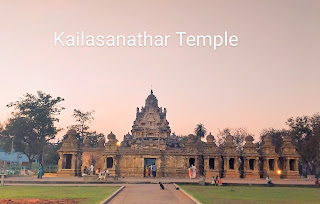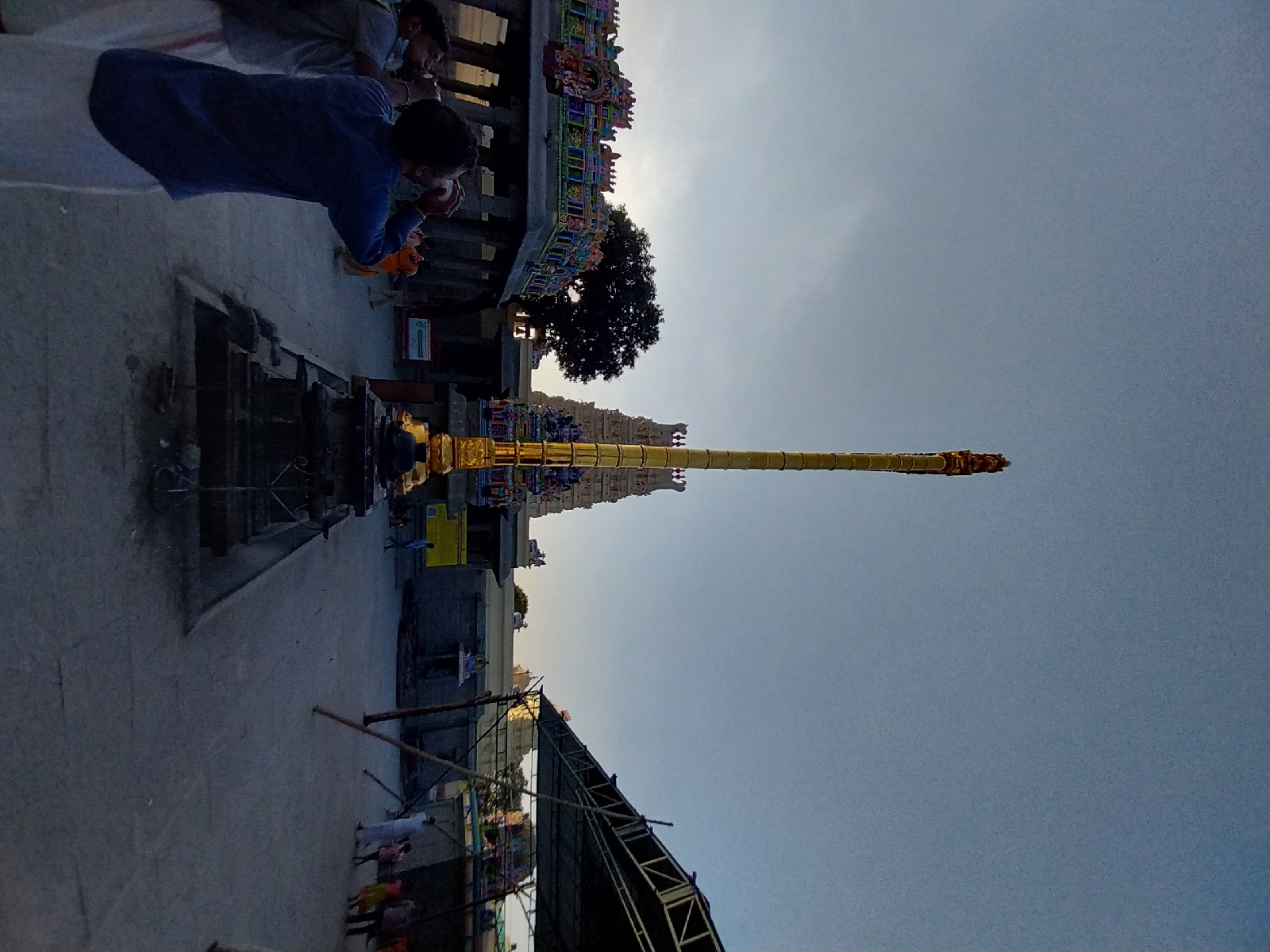Sri KAILASANATHAR TEMPLE, KANCHIPURAM
Tamil Nadu Temple Bike Ride Diaries:
Day 2: 17-02-2024(Contd)
The Kailasanathar Temple, Kanchipuram
The last temple but not the least one visited today is the famous and Heritage & UNESCO heritage temple called The Kailasanathar Temple.
Kailasanathar Temple is located on the banks of the Vedavathi River at the western limits of the Kanchipuram facing east. It is the oldest temple in Kancheepuram.
History of Kailasanathar Temple
Kailasanathar Temple was built by the Pallavas during 650 AD- 705 AD. It is the first structural temple in South India built by Rajasimha Pallaveswaram and later completed by his son Mahendra Varma Pallava, so mesmerized were the Pallavas with this city that they made Kancheepuram their capital. Later on the Cholas took over Kancheepuram after the Pallavas. It is a popular belief that during wars this temple served as a safe haven for the rulers. There was a tunnel built by the kings as an escape route which can be seen even today.
About Kailasanathar Temple
This temple was first of its kind made of stone architecture as compared to other structures which made out of stone carvings or rock carvings. The foundation of this temple is made of granite which enables it to withstand the massive structure, while the outer structure and carvings are made up of sandstone. The temple has 58 small shrines built into the niches of the compound wall enclosing the main shrine. The shrine depicts the carvings of Lord Shiva and Goddess Parvati in many dance forms. Apart from the sub-shrines there are sanctum sanctorum (main shrine), mandapa (main hall), a high compound wall, and an entrance gate, the gopuram. The pillars of the mandapa have statues of lions standing on their hind legs as if trying to warn not to harm the temple.
The entrance wall has eight small shrines and a gopura. Kailasanathar Temple has simple layout with a tower (Shikara) at the center of the complex. The tower of the temple rises in pyramid shape and has a dome shape roof on the top.
The main shrine (sanctum sanctorum) has 16 sided Shivalinga made in black granite. The inner and outer walls of the temple are carved with the images of numerous Gods and Goddesses. There is also a sculpture of Nandi guarding at the entrance. Gods and Goddesses who have their carvings in the outer walls are Brahma, Vishnu, Nandi, Goddess Durga with three Ganas and Shiva in Samhara-Tandava (destructive dancing) pose.
The entrance wall has eight small shrines and a gopura. Kailasanathar Temple has simple layout with a tower (Shikara) at the center of the complex. The tower of the temple rises in pyramid shape and has a dome shape roof on the top.
The main shrine (sanctum sanctorum) has 16 sided Shivalinga made in black granite. The inner and outer walls of the temple are carved with the images of numerous Gods and Goddesses. There is also a sculpture of Nandi guarding at the entrance. Gods and Goddesses who have their carvings in the outer walls are Brahma, Vishnu, Nandi, Goddess Durga with three Ganas and Shiva in Samhara-Tandava (destructive dancing) pose.
The inner walls of the temple has many images of Goddess Durga, Skanda, Bhavati, Tripurantaka, Garudarudha-Vishnu, Narasimha Vishnu (Vishnu in the incarnation of lion faced man), Shiva Tandava (Shiva in a dancing pose), Shiva severing the fifth head of Brahma, desecration of Yagna of Dakhsa, Brahma and his wife, Vishnu flanked by Bhudevi and Sridevi, Lingodhbava (emergence of linga), Bhikshatana, Ravana, and Vali offering prayers to Atmalinga Chandikeshvara. The temple’s south facing wall has very elegant image of Shiva in a sitting posture of peace and quietude known as Dakhshinamurti, and its west wall has Shiva in the form of Lingodhbav.
Specialty of the temple
This is the only temple in Kanchipuram which has retained its originality after being built by the Pallavas, rest of all the temples has been tampered or modified later by the kings of Cholas and/or Vijayanagar rulers after built by the Pallavas. There is numerous depiction of sculpture of erect lions in all directions of the temples. A circumambulatory passage exists along the wall of the temple. It is a narrow passage through which devotees must crawl through after climbing seven steps to reach the passage. It is said that passing through this passage is similar to passing through life and attaining moksha or freedom from life and death circle. The experience of making circumambulation around the deities is truly divine.










Comments
Post a Comment